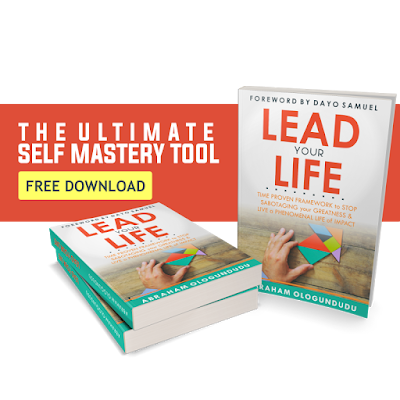We'll go to the first principle.
1. The 'Standing Out' Principle
Eagles fly alone at high altitude and not with sparrows or other small birds. No other bird go to the height of the eagle.
We'll go to the first principle.
1. The 'Standing Out' Principle
Lesson
- Stay away from sparrows and ravens. Eagles fly with eagles.
2. The 'Vision' Principle
Eagles have strong visions. They have the ability to focus on objects up to five kilometres away. When an eagle sites its prey, it narrows its focus on the prey and sets out to get it.No matter the obstacles, the eagle will not move its focus from the prey in view until it gets hold of the target
Lesson
- Have a vision and remain focused no matter what the obstacle and you will succeed.
3. Eating Principle
Eagles do not eat dead things. They feed only on fresh prey. Vultures eat dead animals, but eagles will not.Lesson
- Be careful with what you feed your eyes and ears with, especially in a movies and on TV.
- Stay clear of outdated information.
- Always keep yourself updated and do your research well.
4. The 'Flying principle'
Eagles love the storm. When clouds gather, the eagle get excited. The eagle uses the storm's wind to lift itself higher. Once it finds the wind of the storm, the eagle uses the raging storm to lift itself above the clouds.This gives the eagle the opportunity to glide and rest its wings. In the meantime, all the other birds hide in the leaves and branches of the trees.
Lesson
- We can use the storms of life to rise to greater heights.
- Achievers relish challenges and use them profitably.
5. Participation And Preparation Principle
The eagle prepares for changes: when ready to lay eggs, the female and male eagle identify a place high on a cliff where no predators can reach.The male flies to the earth and pick thorns and lay them on the crevice of the cliff, then flies to earth again to collect twigs which it lays in the intended nest.
He flies back to the earth and picks thorns laying them on top of the twigs. He flies back to the earth and picks soft grass to cover the thorns.
When this first layering is complete, the male eagle flies back to the earth and picks more thorns, lays them on the nest; flies back to get it on top of the thorns, then plucks its feathers to complete the nest
The thorns on the outside of the nest protect it from possible intruders. Both male and female eagles participate in raising the eagle family. The female lays the eggs and protect them. The male builds the nest and hunts.
During the time of training the young ones to fly, the mother eagle throws the eaglets out of the nest. Because the young eagles are scared, they jump into the nest again. The mother eagle throws them out and then takes off the soft layers of the nest, leaving the thorns to bare.
When the scared eaglets jump into the nest again, they are pricked by thorns. Shrieking and bleeding, they jump out again wondering why the mother and father who love them so much are torturing them.
Next, mother eagle pushes them off the cliff into the air. As they shriek in fear, father eagle flies out and catches them up on his back before they fall and brings them back to the cliff. This goes on for sometime until they start flapping their wings. They get excited at this new found knowledge that they can fly.
Lesson
- The preparation of the nest teaches us to prepare for changes.
- The preparation for family teaches us that active participation of both partners leads to success.
- The pricking by the thorns tells us that sometimes being too comfortable where we are may result in us not experiencing life, not progressing and not learning at all.
- The thorns of life come to teach us that we need to grow, get out of the nest and live on.
- The people who love us do let us languish in sloth but push us hard to grow and prosper. Even in their seemingly bad actions, they have good intentions.
6. Shedding Principle.
The eagle knows when to retire. When the eagle grows older, its wings become weak and cannot take it as fast as it should. When it feels weak and about to die, it retires to a place far away in the rocks.
While there, he plucks out every feather on its body until it is completely bare. It stays in this hiding place until it has grown new feathers, then it can come out.
Lesson
- We occasionally need to shed off old habits and vain glory that ensnare us rather than adding values to our lives.
Over to you What do you think about this principles. Are they all valid? Do you have any contrary opinion? Let me know via your comment below.
P.S. If you find this post useful, don't hesitate to share with your friends and subscribe to our feeds to get updated on our new posts. Use the comment form below to share your thoughts





